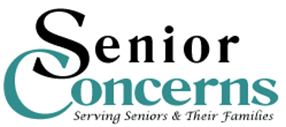During the past year I’ve been on more than my fair share of Zoom meetings. Every such meeting has a personality of its own.
Take, for example, the Zoom meetings hosted by Community Care Licensing, a jurisdiction Senior Concerns falls under. With hundreds of people on the call, we are provided with guidance concerning COVID as it affects program protocols.
It’s understandable that during these types of large-scale meetings most attendees have their cameras turned off because they are listening to the speaker’s information and possibly taking notes. There is no opportunity for interaction unless you post a question in the chat.
For those not familiar with video platforms like Zoom, when logging in from your computer, you have two options: keep your camera on so you can be seen or turn your camera off so that the rest of the participants see only your name or a photo of you.
You can also call in, in which case the attendees can only see your telephone number.
My friend runs a small department of a national company. His team of four spans several time zones and several generations. During their Zoom meetings, cameras are rarely used.
Recently one of his peers complained that my friend’s department was not appearing on camera and this made her team feel “not connected” to them.
So my friend asked me how I felt about the value of appearing on camera when taking part in Zoom meetings.
Let me begin by saying I am a “people person” with a penchant for face-to-face contact, so naturally I would err on the side of having the cameras on. However, looking at it objectively, I can see how at times individuals may not want to be on camera.
If the meeting is outside of normal business hours, participants may not feel the need to be “camera ready” in their appearance. Some people don’t want to be on camera because they do not want others to see their living arrangements. They may be in their bedroom or living room with lots of personal items around.
There is a choice on Zoom for a “blur” background, which obscures details and might be just the solution for this concern.
Sometimes participants may be listening to the meeting while eating and would prefer others not see.
And some people don’t have a camera on their computer. This can be remedied with an external webcam and microphone that can be purchased for under $40 and provide remarkable picture and sound quality.
Lastly, some individuals don’t like to look at themselves on camera. For those familiar with videoconferencing platforms, I have a Ring light, so my face is evenly lit with nice soft light, and I have “enhance my appearance” on the Zoom controls to appear at my best. If I must look at myself at least it is an enhanced version of me.
I recently asked a Zoom group how they felt about cameras versus no cameras. It was a lively conversation.
Many said they loved to see others’ facial expressions, like heads nodding in agreement and smiles on camera. Some said cameras were helpful to see if everyone was paying attention.
One of the participants has been encouraging her son, who is a remote-learning college student, to turn his camera on, saying that the teacher would appreciate seeing and interacting with him.
One of the participants in our meeting is a retired professor of communication studies. She said that while tone of voice could be discerned without a camera, nonverbal communication and body language could not—like expressions, gestures and eye contact—which are powerful communication tools.
One of the strongest statements came from a report she sent me based on nonverbal communication studies by P. Ekman and W.V. Friesen: “Nonverbal messages don’t stop when you stop speaking. Even when you’re silent, you’re still communicating nonverbally.”
It’s easy to see why many people would like participants to be on camera during important Zoom meetings where opinions are being expressed. Nonverbal cues can help us to see if others are listening and how much they care about the topic.
Next time you’re invited to a Zoom meeting, consider turning your camera on. It will enhance your own communication and you will be signaling to the audience that you are engaged and interested.




